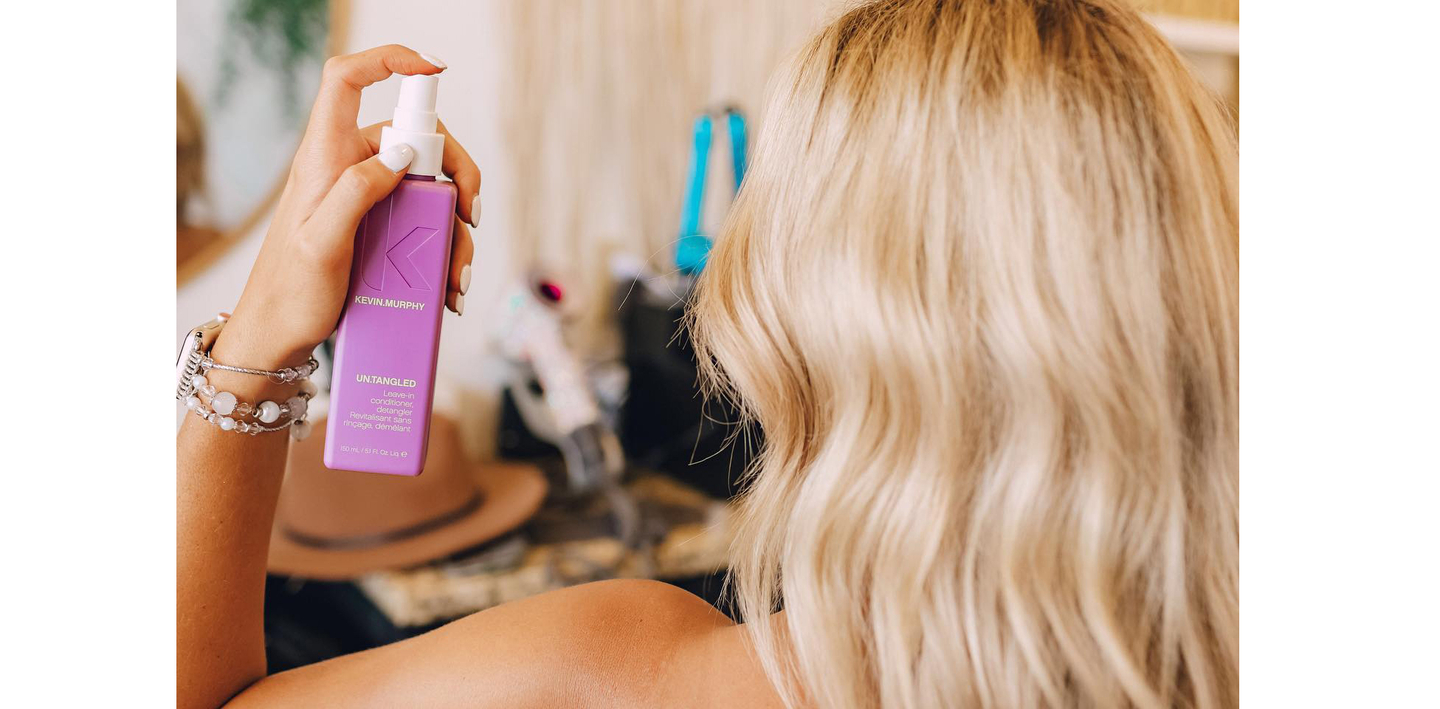Pro Tips To Detangle Your Hair


People with curly hair will tell you their hair tangles ALL. THE. TIME. and people with straight strands will complain they have it muuuuuch worse. But here’s the truth: yes, texture plays a significant role in hair becoming unmanageable but there are other factors. Hair type and the state of the strands also affect how your hair reacts to friction. But whether your hair is curly or straight, short or long, sooner or later, we all deal with annoying knots! To help you detangle natural hair and avoid breakage, we’ve created a-step-by-step instructions for you to follow when challenged with such hair issues.
Which hair texture is most prone to tangling?
Hair knots are a menace that happens after two or more strands wrap around each other and tangle. Friction often makes the tangling worse, so knots become larger and harder to detangle. Smooth and straight hair tangles less than curly, because of the shaft’s even surface. However, the more textured or damaged the strand, the more chance for it to make knots. Usually, tangled hair happens to:
- fine and thin strands,
- ageing hair,
- longer lengths,
- curly hair,
- hair that lacks hydration,
- chemically over-processed hair,
- strands that are often exposed to heat, UV and sun damage.
It can be hard to eliminate factors that damage hair and lead to the creation of knots. However, if you want to maintain healthy hair – prevention is better than cure. To achieve your hair’s optimum results, you should commit to a customised regimen and reduce exposure to harmful factors as much as possible. Moreover, you need to pay attention to your daily maintenance, such as washing, combing, hairdos, and other routines, because mechanical damage speeds up the breakage and split ends.
The least-painful way to efficiently detangle natural hair
Detangling hair after the wash is unavoidable. Still, some people prefer getting rid of knots before washing their hair. While it might seem more time-consuming, tending the hair before the wash will make detangling after the wash easy. Either way, to avoid unnecessary hair breakage, split ends, and mechanical damage, follow these simple steps:
Section hair into parts
Parting your hair into sections can help you detangle natural hair easier. That way, you will manage to control the knots while combing. Depending on your hair type, length, thickness and volume, split your hair in half, or into four, or even six bits. Do one section at a time before joining them together. Divide and conquer!
Moisturise the strands for easier control
Brittle and dry hair is very prone to damage and breakage. This is due to a lack of elasticity, one of the hair’s key features that promote resilience. Such hair is highly porous, which means it can absorb water like a sponge., which means it can absorb water like a sponge. However, the hair cuticles on such hair are open, and moisture evaporates quickly, leaving it brittle and dehydrated again. That’s why, using conditioners, leave-ins, and oils is absolutely vital to restoring balance and quenching the thirst of your parched hair.
In most cases, you should comb and brush when dry instead of wet, but detangling knots requires the opposite approach. When your hair is coarse or dry, it’s much easier to manage it while wet because moisture gives it temporary elasticity. Depending on the dryness level, you can spray it with water or use a dry conditioner on the strands. Still, be very careful. Wet hair is more fragile than dry. Because of elasticity, you might get the impression that knots give less resistance, but, in fact, the strands stretch under pressure.
YOUNG.AGAIN DRY CONDITIONER and YOUNG.AGAIN treatment oil are wonder-duo for high porosity hair prone to tangles and dryness
Detangle big knots with your fingers
There is no better comb than your fingers! Running them gently through hair, you will eliminate “obstacles” without damaging or breaking the strands. You will probably remove at least 50% of the knots that way. The most persistent ones will require some sort of tool intervention.
Use a comb and brush for your hair type
While a wide-tooth comb is the most common option for detangling, some might prefer to use special smoothing brushes. Most combing routines start with combing hair from the roots down to the ends. However, to better detangle hair, focus on the ends first and gently work your way up. Hold the hair section in the middle of the strands to reduce the pulling of the roots.
Use less force!
Be gentle when pulling the comb to get rid of knots. That way, you will minimize the damage and save yourself a lot of time you’d spend on repairing the consequences. Keep in mind that this process can take time. So, arm yourself with patience before trying to detangle natural hair.
Is it possible to prevent hair tangling?
It’s impossible to completely prevent hair from tangling. However, you can take steps and reduce the possibility of dealing with annoying knots with these tips:
- Keep your hair hydrated and nourished with paraben and sulphate-free hair products designed for your hair type,
- Add detangling products to your hair regimen,
- If your hair is dry, use oils to help retain the moisture and make it more elastic,
- Minimise styling habits that include heat and products aggressive on hair and scalp,
- Keep your hair protected from external damage, such as pollutants, the sun, and UV rays
- Avoid hair manipulation that is breaking and stressing your hair, such as thigh hairdos that are pulling the roots and tight binding,
- Use detangling leave-in every time you wash hair,
- Opt for protective and long-lasting hairstyles that shield the ends and strands from bending and breaking, like buns, braids and twists,
- Reduce the overnight damage that happens because of friction and have your hair tucked and protected every time before bed.
And finally, to reduce necessary hair maintenance in the future, keep your hair satisfied! If your hair is dry, hydrate it! If you’re fighting oily hair, commit to a specific regimen that will rebalance the scalp surface. If your hair ends are split and brittle, trim them! If the strands are too damaged, focus on finding the cause and solving the problem instead of fighting battles you can’t win. Restoring the shine and smoothness of your overprocessed hair is not as hard as you think. If you focus on your hair health and protective hairstyles for your hair type, you won’t have to detangle natural hair as often!
Featured image source: marissaliechtyhair


